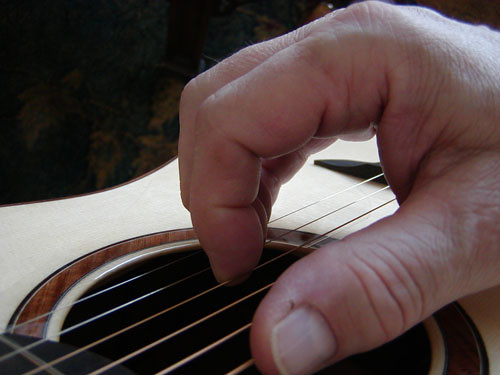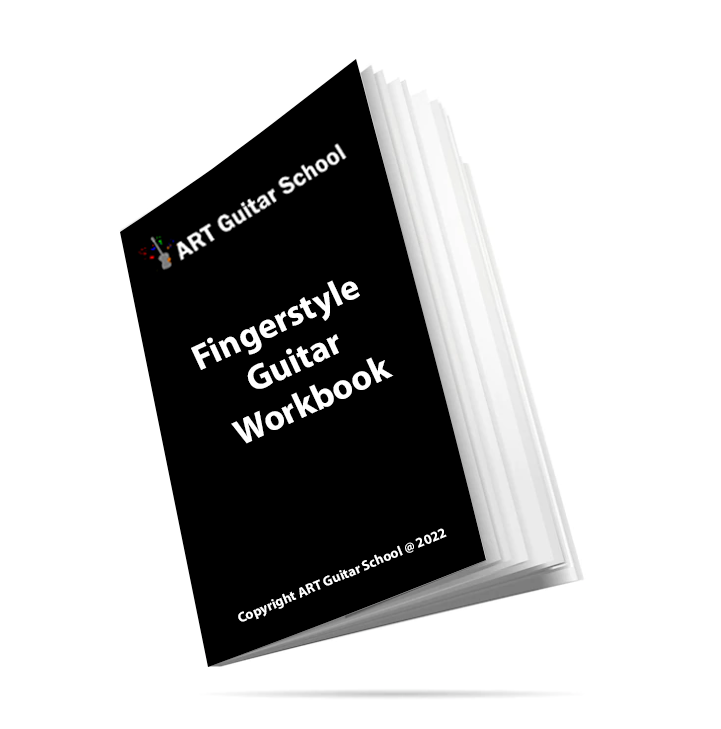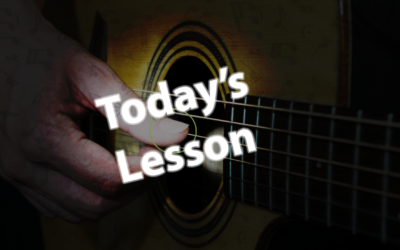One of the most common questions that arise when discussing fingerstyle is if you should use nails or flesh when playing.
Nails require you to either grow out your fingernail or apply acrylics whereas flesh doesn’t require any additional maintenance except for cutting the nails.
You may be asking, what are the main differences and advantages/disadvantages between the two?
Nails
Right off the bat, nails are going to provide a brighter tone due to the material that is striking through the string. With proper shaping and filing technique the nails could provide a warmer tone. This requires several adjustments with the filing of the nail in order for the nail to come out just right for your specific right hand technique. There are many different angles & approaches but all have the same principle.
This picture demonstrates a good nail length and shaping to start with:
Flesh
This route is the most common to start with, as it doesn’t require any additional work in order to play fingerpicking guitar. If we forget the nails and disregard any artificial product we use our flesh to fingerpick. The flesh provides a much warmer tone and less volume as well as dynamic range since it’s not likely to project as well as nails.

Here is a video on nail shaping I recommend:
Deciding on your nails or flesh is based on your personal taste and the sound that you’re trying to achieve. If you were a fingerstyle player or classical guitar player it is recommended that you at least try the nails and see if they’re a good fit for you. If you have brittle nails, there are hardening products and vitamins that can help to be able to strengthen them.
Learn more about technique through our FREE Fingerstyle Workbook!
FOLLOW US ON
Get our FREE Fingerstyle Workbook!
RELATED BLOG POSTS
5 Beautiful Fingerstyle Guitar Songs You Can Learn in a Week
Looking for some fingerstyle song challenges? Here are five songs that are perfect for you to learn in a week:
“Blackbird” by The Beatles – An iconic, simple fingerpicking pattern.
“Dust in the Wind” by Kansas – A classic, easy-to-learn fingerstyle tune.
“Fast Car” by Tracy Chapman – A soulful, subtle fingerstyle riff.
“Hallelujah” by Leonard Cohen – Emotional and accessible.
“Tears in Heaven” by Eric Clapton – A slow ballad perfect for emotional expression.
The Art of Dynamics in Fingerstyle Guitar: Adding Emotion to Your Playing
Fingerstyle guitar gives you the power to add emotion through dynamic changes. Here’s how to express yourself through dynamic variations:
1. Thumb Control
Control your thumb’s volume to emphasize or soften bass notes, depending on the song’s mood.
2. Finger Pressure
Alter your finger pressure when plucking to create tonal variety. A soft touch yields a mellow sound, while a firm pluck sharpens the note.
3. Experiment with Rest Strokes
Let your finger rest on the next string after plucking for a fuller, richer sound.
4. Play with Dynamics During a Song
Vary your volume throughout the song to create emotional contrast—soft in some sections, loud and intense in others.
Building Fingerstyle Speed: Techniques and Exercises
Want to play faster? Speed is essential in fingerstyle, and it requires time, muscle memory, and dexterity. Here’s how to improve your fingerstyle speed:
1. Start Slow
Always practice at a slow tempo. It’s better to play perfectly slow than mess up at a fast pace. Gradually increase speed with a metronome.
2. Isolate the Fingers
Practice each finger separately, focusing on your thumb for bass notes and your index and middle fingers for melody notes.
3. Cross-Hand Exercises
Practice alternate bass and melody with a focus on synchronizing both hands.
4. Work with the Circle of Fifths
Practice fingerpicking through chord changes based on the Circle of Fifths to improve transitions and finger independence.
5. Use Backing Tracks
Once comfortable, use backing tracks to stay on beat and stay motivated.





0 Comments